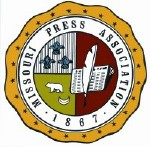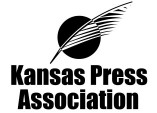Infotrust-fri-wrap
AGENDA /
WHO'S COMING /
REGISTER /
ABOUT VENDORS /
LODGING /
IVP FORM /
ANDAC VISION /
REQUEST INFO /
RECOMMENDED READING /
LIVE STREAM/BLOG /
TWITTER STREAM



Contents
- 1 “From Blueprint to Building: Making the Market for Digital Information"
- 2 Notes by Bill Densmore of Friday's session discussion
- 2.1 Introducing ClickFuel and Colby West
- 2.2 Background on NewzGroup / Geo-Tel Corp.
- 2.3 Discussing the value of information
- 2.4 Who are the parties who value information?
- 2.5 Who are the users of content?
- 2.6 Creating a content-management protocol for the web
- 2.7 How do we move from problem definition to solution?
- 2.8 Final question: Who will lead? Who should lead?
“From Blueprint to Building: Making the Market for Digital Information"
An action congress for trust, identity and Internet information commerce serving newspapers and beyond
June 23-25, 2010 / Reynolds Journalism Institute / Columbia, Mo.
Notes by Bill Densmore of Friday's session discussion
Bill Monroe notes that the next meeting of the Multistate Digital Task Force, working on the formation of the American Newspaper Digital Access Corp. project, will be on Friday, July 30, 2010 at the Kansas City Star and the meeting is open to the public. During July, four task force subcommittee's will meet.
On Wed., Aug. 4, managers of state newspaper associations throughout the United States will gather for three days in New Orleans, La., and on the first day the theme is: "Things that affect the external environment of newspapers." Monroe says he expects ANDAC will be on the agenda on that day.
Bill Densmore next invites Kim Garretson to introduce visiting vendor ClickFuel, and founder Colby West.
Introducing ClickFuel and Colby West
Kim Garretson: Ovative Group, Venture development, based in Minnesota. He was Best Buy’s liaison to the venture capital industry.
West says he was part of team which started Monster.com. They are working on advertising for local audience. Local dollars becoming more important; the role of the newspaper is becoming more important. You are being more of a distributor, agency, being consultative with client – being a trusted advisory. It is relatively easy to
Key point of ClickFuel: In one source, your client can see what is going on with their ads across all platforms. Hearst has 30 people who prepare reports for clients. ClickFuel thinks Hearst can reduce that group to 3 instead of 30.
Another key thing they are doing – is trying to make it easier for newspapers to sell or upsell the products they aren’t selling well.
Background on NewzGroup / Geo-Tel Corp.
What does NewzGroup/Geo-Tel Corp. division do? Working with press associations to develop solutions for them; started out with traditional press clipping services, faced challenge of ineriting old-world model. No clippers just clickers now. Their business is the sale of aggregated content to customers – government, financial, educational clients. Extending IT force. They operate legal-notice websites in eight states.
One of the first companies to pay royalties for re-use of content. In two states they get electronic uploads. They do blanket royalty payments back to press associations.
Discussion about whether database can be eventually real time so that news consumers can use it.
Bob Kasbian: If we are going to monetized content, we have to get to a point where people place a value on it.
Discussing the value of information
Discussion: The differential value of information.
Tom from Missourian: Semantic search is becoming important. You don’t want 10,000 search results, you want the 10 precisely needed search results.
Randy Picht: AP’s digital cooperative/Exchange database, done with the idea that the owners of the content will always be the ones to decide what becomes of their content. Member papers are becoming far more aware of rights issues regarding their content. There are now 1,100 or 1,200 feeds from daily newspapers. One opt in could be: “Send my content to Geo-Tel.”
Some discussion of archiving challenges.
Who are the parties who value information?
- Authoritative content – newspapers, government, MST/speciality, broadcasters, researchers, historians, academics, librarians, photographers, public.
- Non-authoritative: Corporations, public, government.
- Different gatekeepers for different audiences – buyer beware?
Idea: Develop a content number system. On the photo front: It would be useful to know what everyone has in their photo archives.
Existing solutions inventory
Who are the users of content?
- Public, government agencies, politicians, educational, financial/credit, libraries, geneologists, lawyers, trademark owners, corporations, PR firms.
Creating a content-management protocol for the web
- Can a single protocol allowing for search, retrieval across multiple repositories, storing, valuing, transmitting, recording activity? Also something which solves the curve of real time down to archival usages, all in one system. So 10 minutes after a story is filed and published it is totally retrievable.
- Need common technology and in place a migrating system, for moving to the next technology.
- Is that Google already? But Google relies on it being on the web.
- Protocol should include ways for channeling royalties back to content creators. How to create protocols seems an addressable challenge.
Listing the constituencies of a web-network content-mangement protocol
- The AP
- Geo-Tel
- State press associations
- Individual publishers
- National press groups, too
- Library of Congress
- Internet Archive (archive.org)
- PhotoWings
- CircLabs Inc.
- Clickshare Service Corp.
- IPhase3 Corp.
- Aggregation/personalization/mixes
- AmericanTowns.com
- Smithsonian Institutions
- CatchMedia / clearing house for music industry (breaking Apple/iTunes ecosystem-Google buy?)(rolling out with Carphone warehouse)
- Next Issue Media (registry/clearhouse)
- StoryMarket / World Co.
- Historical societies
- Publish2.com
- Lexis-Nexis
- ProQuest
- Newsbank
- Journalism Online / Press+
- The Newseum
- Highbeam Research archive service
- Copyright Clearance Center
- ICopyright
- Major teaching institutions
- Journalism think tanks
- Nieman
- Religion Writers Assn.
- Natinal Newspaper Assn.
- Editorial Writers Assn.
- National Assn. of Science Writers
- Society of Business Writers & Editors
- Enviromental Writers Assn.
- Association of Health Care Journalists
- Education Writers Assn.
Phil Lewis describes Scripps initiative
Scripps is 12 daily newspapers and a number of broadcast stations. Scripps editors met a few weeks ago and a key question they asked: How do we control our own distribution? "Until we figure that out we're at the mercy of the Google's of the world," says Lewis. He doesn't think paywalls will do it. But, as pageviews and users rise by double-digit amounts at their websites, revenues go down.
How do we move from problem definition to solution?
Roger Gafke: Have ingredients but haven’t got to cook yet. We have pushed this notion of getting paid for content. Several things. Impressed with adding value that Brad (of Geo-Tel) talked about. What about doing pilots at the Reynolds Journalism Institute? Experiments and research?
Possible research efforts for RJI
These suggestions were given by participants:
- PRICING RESEARCH -- Research about pricing / need to sit and digest
- PROOF OF NICHE MARKET VALUE -- Is there proof that markets will pay more for an targeted audience. Will they pay a higher CPM for a more etargetted demographic. Volume will be lower but will CPMS go higher. Historical research probably won’t help. We know if know more about you that advertisers like it better. But is it proven that you will make more money. Do research that proves the value of targeted advertising
- SOCIAL MISSION -- What about the looking at social mission ownership aspect
- AFTER ADVERTISING – What are the options? Who is doing what? Traditional market fracturing. Investigate methods for providing “agency” services. CellFire coupons. Some body made it easier. People pay for convenience.
- REVENUE GENERATION: Always a hot topic/how to, opportunities.
- PHOTO ARCHIVES: Survey what newspapers have and how they are stored.
Final question: Who will lead? Who should lead?
- Scripps doing a national reporting project on the future of newspapers. Publication in August.
- Problem is not technology it is trust. Needs to be someone trusted by the content originators. Natural answer is the state press associations. Key is trust.
- Who will lead is the question? Newspapers will figure out or they will be lead or have their fate dictated to them by someone else.
- Clearly press association leadership issue. Should be state press associations using collaboration of the best minds, including RJI and others. Most members smaller community newspapers, personal relationship.
- People talk to those they are most familiar with, but make it broader and perhaps go with some of the think tanks to get perspective. Look further into L3C. Not optimistic about how this will work compared to some technology companies. Look into bringing in philanthropists.
- In 1984, newspapers came together and developed the SAU. There was a 12-pica column width. Ad placement agencies could send out one ad size to all newspapers and be confident it would fit. That came through an agreement among newspapers and push by press associations. ANPA was big player. That lasted for 15 or so years until page-widths shrank. Now back to where we were – ads have to be prepared 4 different column widths. Newspapers have to have a consensus and press associations can help with that.
- Leader is going to be the one not afraid of the big push. Associations in a position to lead, this probably will be the leader. Hurrah, we have a leader.
- Assumption in the question: That the leader gets to tell people what to do. It doesn’t always work telling newspapers what to do. Other assumption: That there is a solution, an answer for everything that will fix “the problem.” Who is going to lead: The market is going to be the leader and we need to come up with answers and solutions so the market can lead because newspapers can pick and choose the best business model, advertising solution. And as much as we can do with standardization and collaboration will make it better but it will not be the answer for everbody.
- The state press associations have great credibility because they are close to the grass roots and substantial changes in our practice have to have support at the grass roots, because so much of what happens in our country is worked out that way. Putting responsibility on press associations is the right thing to do.
- It ought to or should have happened at some of the national associations. But that’s probably is not going to happen. The national associates are now nichified. The states have to cross all those boundaries. Even if organizations had innovative leadership, it has been difficult to implement. Leadership has to come from somewhere else, a different leadership structure. Maybe we do need something like RJI. More of a collaboratory thing where you bring together and that is in itself a leadership role. Something multidisciplinary. Bringing people together and looking to innovate won’t happen outside the big corporations, and that’s why someone like RJI has to step forward for the rest of us.
- Not sure there is an easy answer but there needs to be an answer. ANDAC is a piece of the puzzle. We need to get started somewhere and as soon as possible. Start with something. Not the nature of the news industry to want to be first. “I would rather be the lead dog.” It is a bottom up rather than a top down cry to do something. We have a real opportunity to make a difference.
- Thanks. Frustration that people keep taking our content and “throw us down in the mud.” Realization that newspapers have to do it themselves. Three states can’t do it, but in a few weeks will be meeting with other press associations and they will be asked to join. Take the July meeting to continue to solidify. Continue to make the tent bigger, bring other people in.
- This is bigger than and well beyond newspapers and beyond creators and owners of content. The convenors, leaders should be a group representing the creators and owners of authoritative content, including magazines, other kinds of publishers. Not so much a question of leading but who will convene a process that gets to a convention and set of protocols that solve the problem. Process should included remixers, archivists, The AP, and the big elephants such as Google and Bing. “They needed to be invited to the party along with the technology people that figure out how you do this.” It’s a collaborative process.
- Whoever leads the market is going to determine what wins. Technology is every day enabling the individuals in that marketplace to have more and more control over what consumers receive from content publishers and advertisers. We are on the verge of the addressable one-to-one,whoever leads this is going to have to do a lot of research and stay close to the market.
- Went to first newspaper association show three months ago. What he heard: We were ignorant, now we’ve awoken and started seeing. Ground Hog Day. Not an expression he had heard before. A lot of speeches I’ve heard for the last 15 years. If we don’t do it some 25-year-old kid will do it. Who is the person that is going to drive it? Which person here, maybe not here, may it is a student at RJI, who is going to own it.
- Who else should be on the table? You want more enriched content. Those people can help you. Where is the voice of the authenticated?
- A major question: The focus is on how to monetize newspaper content and how newspapers can band together and get that value. The leaders are here – people like Bill Monroe and Bob Kasabian. The leaders are hear for ANDAC. It seems to me it is ANDAC. I came here because I am interested in seeing newspapers rebound so my students get jobs and so that democracy can thrive . . . I care about journalists who write accurate, fair stories following ethical practices. The leadership is right here. You’ve gotta have RJI because RJI is kind of a clearinghouse. University of Missouri’s is the program we all look to for a model. It makes sense, they have the prestige. It seems to me you have the clearinghouse for research, to test. Leadership is right here and at least to me it is ANDAC. That’s the most exciting thing I have heard. … every year for five years in a row (in Texas) this is what we talk about.”
- The one who leads is one who acts and then reacts and reacts and reacts. You’ve got to have an entity who gets started.

